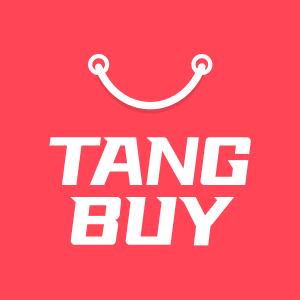Shopify vs WooCommerce Which Platform Fits Your Business Best

Choosing between Shopify vs WooCommerce depends on your specific needs. If you want a simple and quick setup, Shopify is a great option. You can create a store fast, even without much technical knowledge. On the other hand, WooCommerce offers more control and customization, but it requires some tech skills and more time investment. Consider your technical ability, budget, and how much you want to customize your store. Below is a table to help you compare Shopify vs WooCommerce and decide which platform aligns best with your goals:
Platform | Budget Needed | Best For | |
|---|---|---|---|
Shopify | Low | Moderate | Beginners, quick setup |
WooCommerce | Moderate-High | Varies | Custom stores, tech-savvy |
Key Takeaways

Shopify is quick and simple to set up. You do not need many tech skills. This makes it great for beginners and small shops.
WooCommerce lets you change many things and have more control. But you need more tech skills and time to use it.
Shopify has a set monthly price. This price covers hosting and support. WooCommerce costs can change. It depends on your hosting and plugins.
Shopify gives you built-in tools and help all day and night. This lets you sell without worrying about tech problems.
WooCommerce uses plugins and help from the community. You get more freedom but must handle updates and safety yourself.
Shopify grows by itself to handle more visitors and products. You do not need to do much work.
WooCommerce can also grow as much as you want. But you need good hosting and tech skills to keep it working well.
Picking the best platform depends on your money, tech skills, how much control you want, and your business plans.
Quick Comparison

Overview
When you look at Shopify vs WooCommerce, you want to spot the main differences fast. The table below lets you see what each platform gives you. This helps you pick the one that fits your needs.
Category | Shopify | WooCommerce |
|---|---|---|
Setup | You can set up a store in minutes. It is a fully hosted platform. | You need tech skills. It is a self-hosted plugin and needs hosting setup. |
Cost | Plans cost from $29 to $399 per month. Hosting is included. | The plugin is free. Hosting and extras cost $200 to $600 or more each year. |
Ease of Use | It has a drag-and-drop interface. It is made for people without tech skills. | The setup is harder. You need tech knowledge, but you can customize more. |
Flexibility | There is an app store with many apps. You are limited by the platform. | It is open-source. You can use many plugins and customize a lot. |
Support | You get live chat and phone support all day and night. There are lots of guides. | There are forums, guides, and email help. There is no live support. |
Scalability | It works for small or big stores. The platform grows with your store. | It can handle lots of traffic. Growth depends on your hosting and setup. |
Tip: If you want your store ready fast, Shopify is easy to use. If you want to change every detail, WooCommerce lets you do that.
You may wonder what real users think about these platforms. Here is a quick look at reviews and ratings:
Metric | Shopify | WooCommerce |
|---|---|---|
Number of Reviews | 15 | |
Average Rating | 1.13 (lower) | 1.87 (higher) |
Positive Reviews | 2 | 3 |
Neutral Reviews | 3 | 0 |
Negative Reviews | 35 | 12 |
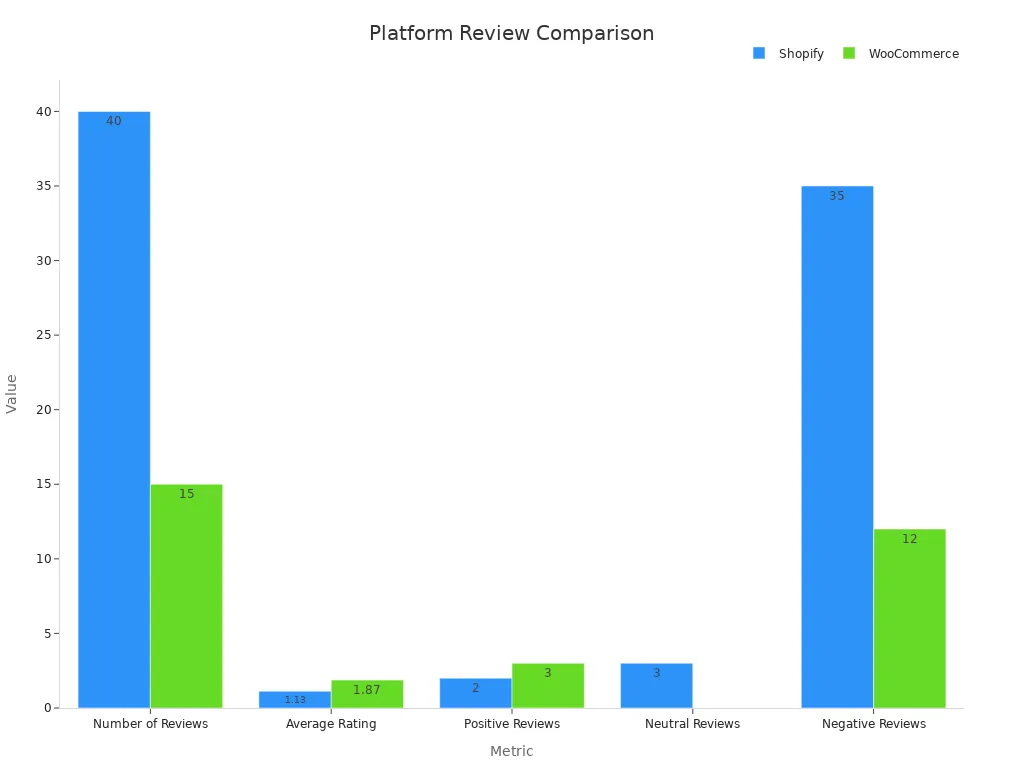
Both Shopify and WooCommerce have good features. Shopify gives you live chat and phone help any time. WooCommerce uses forums and guides, so you can look for answers or ask others. WooCommerce is great for flexibility. You can change almost anything and use lots of plugins. Shopify is simple with its app store, but you may find some limits if you want big changes.
Scalability is important as your business grows. Shopify handles growth for you, so you do not need to worry about lots of visitors. WooCommerce can grow too, but you must pick good hosting and manage it well. Big companies like Nordstrom and Rakuten use WooCommerce, so it can handle many customers.
When you compare Shopify vs WooCommerce, think about what matters most for your business. Do you want speed and support, or do you want full control and flexibility? This quick comparison helps you see the main points before you look deeper.
Pricing

Shopify Costs
Plans
Shopify gives you three main plans. You can pick the one that fits your store size and needs. The plans start at $29 per month for Basic, $79 for Shopify, and $299 for Advanced. Each plan includes hosting, SSL security, and a free subdomain. You do not need to worry about finding a web host or setting up security. Everything comes in one package.
You also get a 3-day free trial. This helps you test the platform before you pay. If you want more features, you can upgrade your plan at any time.
Fees
Shopify charges transaction fees on every sale. If you use Shopify Payments, you pay only credit card fees. These start at 2.9% + $0.30 per transaction on the Basic plan. If you use another payment gateway, Shopify adds an extra fee—2% on Basic, 1% on Shopify, and 0.5% on Advanced.
You may also pay for extra apps, premium themes, and marketing tools. Premium themes cost between $150 and $350 as a one-time fee. Essential apps can add about $20 per month to your bill. If you want a custom domain, it starts at $11 per year.
Here’s a quick look at Shopify’s average monthly costs:
Cost Factor | Shopify (Average Monthly Cost) |
|---|---|
Platform Cost | $49 (subscription fee) |
Hosting | Included |
Domain Name | $1.50 |
SSL Certificate | Included |
Theme | $3 (premium theme amortized) |
Apps/Plugins | $20 (essential apps) |
Transaction Fees | $68 (2.9% + $0.30 on $2,000) |
Additional Costs | $10 (optional marketing etc.) |
Total Average Cost | $151.50 |
You can see that Shopify’s pricing stays predictable. You pay a fixed monthly fee, plus any extra apps or transaction costs.
WooCommerce Costs
Hosting
WooCommerce works as a free plugin for WordPress. You need to buy your own hosting. Hosting prices start at $5 per month for shared hosting. Managed WordPress hosting costs more, sometimes over $100 per month for big stores. Most small stores pay about $15 per month for good hosting.
You also need a domain name. This usually costs $10 to $20 per year. Some hosts give you a free SSL certificate, but others charge extra.
Extensions
The WooCommerce plugin is free, but you may want extra features. Paid themes cost between $20 and $100 as a one-time fee. Extensions and plugins can be free or cost several hundred dollars per year. For example, accounting, subscriptions, and membership tools often cost $100 to $500 per year.
You also need to think about security. Security plugins and services can cost $50 to $250 per year. Backup solutions and compliance tools add more. If you want to hire a developer for custom work, fees range from $10 to $100 per hour.
Transaction fees are about the same as Shopify—2.9% + $0.30 per sale with PayPal or Stripe. Marketing tools like email services cost $20 to $100 per month.
Here’s a table showing average WooCommerce costs:
Cost Factor | WooCommerce (Average Monthly Cost) |
|---|---|
Platform Cost | Free (open-source) |
Hosting | $15 (mid-range hosting) |
Domain Name | $1.50 |
SSL Certificate | $0 (assumed free via host) |
Theme | $3 (premium theme amortized) |
Apps/Plugins | $8 (essential plugins) |
Transaction Fees | $68 (2.9% + $0.30 on $2,000) |
Additional Costs | $10 (optional extensions) |
Total Average Cost | $105.50 |
You can see WooCommerce costs less on average, but prices change based on your choices.
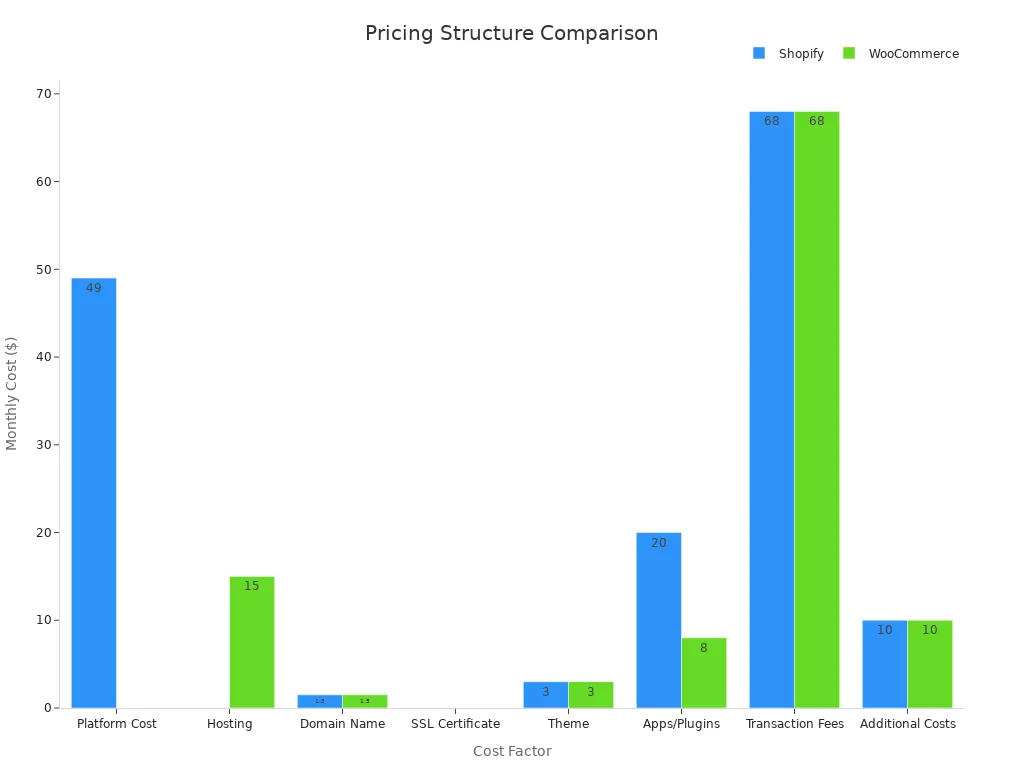
Note: WooCommerce gives you more control over spending. You can start small and add features as you grow.
Cost Verdict
Shopify gives you a simple, all-in-one package. You pay a set monthly fee, and you know what to expect. This makes budgeting easy. You get hosting, security, and support in one place. But, you may pay more over time for apps and transaction fees.
WooCommerce lets you control every part of your store’s costs. You can pick cheap hosting and free plugins, or you can invest in premium tools. Your monthly bill can be lower, but you need to manage hosting, security, and updates yourself.
Here’s a side-by-side look at key pricing features:
Metric / Feature | Shopify | WooCommerce |
|---|---|---|
Cost Predictability | High (fixed monthly fee) | Medium (varies by setup) |
Upfront Cost | Low (monthly) | Low (can start free, pay as you grow) |
Transaction Fees | 2.9% + $0.30 (Shopify Payments) | 2.9% + $0.30 (PayPal/Stripe) |
App/Plugin Costs | Recurring (monthly) | One-time or annual |
Hosting/Security | Included | Separate cost |
Customization Cost | Higher (apps/themes) | Flexible (plugins/themes/developer) |
If you want a store that just works and you do not want to worry about tech stuff, Shopify is a great choice. If you want to save money and you like to tinker, WooCommerce gives you more freedom. Both platforms can fit your budget, but the best choice depends on how much control you want and how much work you want to do.
💡 Tip: Think about your long-term plans. Shopify costs more but saves you time. WooCommerce can be cheaper, but you need to manage more things yourself.
Ease of Use

Shopify Simplicity
Setup
Starting with Shopify is easy for most people. You sign up and follow simple steps. The setup takes about 10 minutes. You do not need a credit card for the free trial. This means you can try it without worry. Shopify asks you questions about your business. You pick a theme and add your products. You also set up payments. Shopify handles hosting, security, and mobile features. You do not need to do updates or backups. Many people launch their stores in less than a week. Some even get their first sale in a few hours.
Tip: Shopify has a drag-and-drop editor. You can move things with your mouse. You do not need to know code. You see changes right away. This makes designing your store quick and fun.
Management
Shopify stays simple after your store is live. You get a dashboard to see sales and orders. You can add as many products as you want. Built-in tools help you manage everything. Shopify updates your store for you. You never have to install updates. Your store’s data and design are separate. You can change themes without losing products or customer info. If you need help, Shopify has live chat and phone support all day and night. You always have someone to help if you get stuck.
Here are some reasons Shopify is easy to use:
Guided setup takes about 10 minutes.
No coding needed—just drag and drop.
Updates and security are automatic.
Payment and checkout are built-in.
24/7 support is always there for you.
WooCommerce Complexity
Installation
WooCommerce gives you more control, but it takes more work. First, you need a WordPress website and hosting. Then, you install the WooCommerce plugin. This takes longer and needs some tech skills. You must connect your domain and set up SSL security. You also pick a theme that works with WooCommerce. If you have never used WordPress, it can feel hard at first.
Maintenance
With WooCommerce, you handle updates, backups, and security. You add plugins for extra features. You must keep plugins updated. Sometimes plugins do not work well together. You may need to fix problems yourself. Payment is not built-in, so you add plugins for PayPal or Stripe. Support comes from forums and guides, not live chat. You need to search for answers or ask the community if you have trouble.
Here is a table that compares ease of use:
Platform | Ease of Use Description |
|---|---|
Shopify | Very user-friendly, ideal for beginners |
WooCommerce | Requires some technical knowledge, integrates with WordPress |
User Verdict

Most people say Shopify is much easier to use. It is simple and clear. You do not need to know code. WooCommerce gives you more power, but you must learn WordPress and do more tech tasks. If you like to tinker and want full control, WooCommerce is good. If you want a store that just works, Shopify is better.
Shopify | WooCommerce | |
|---|---|---|
User Interface | Intuitive, beginner-friendly | Powerful, but complex |
Setup Process | Guided, quick launch | Technical, more steps |
Technical Expertise | Minimal needed | Higher, WordPress required |
Customer Support | 24/7 live chat and phone | Forums and documentation |
Payment Processing | Built-in | Needs plugins |
Mobile Responsiveness | Built-in | Depends on theme/plugins |
Inventory Management | Robust, user-friendly | Needs extra plugins |
Note: If you want to focus on selling, Shopify is easier. If you want to build something special and do not mind learning, WooCommerce gives you more tools.
Features
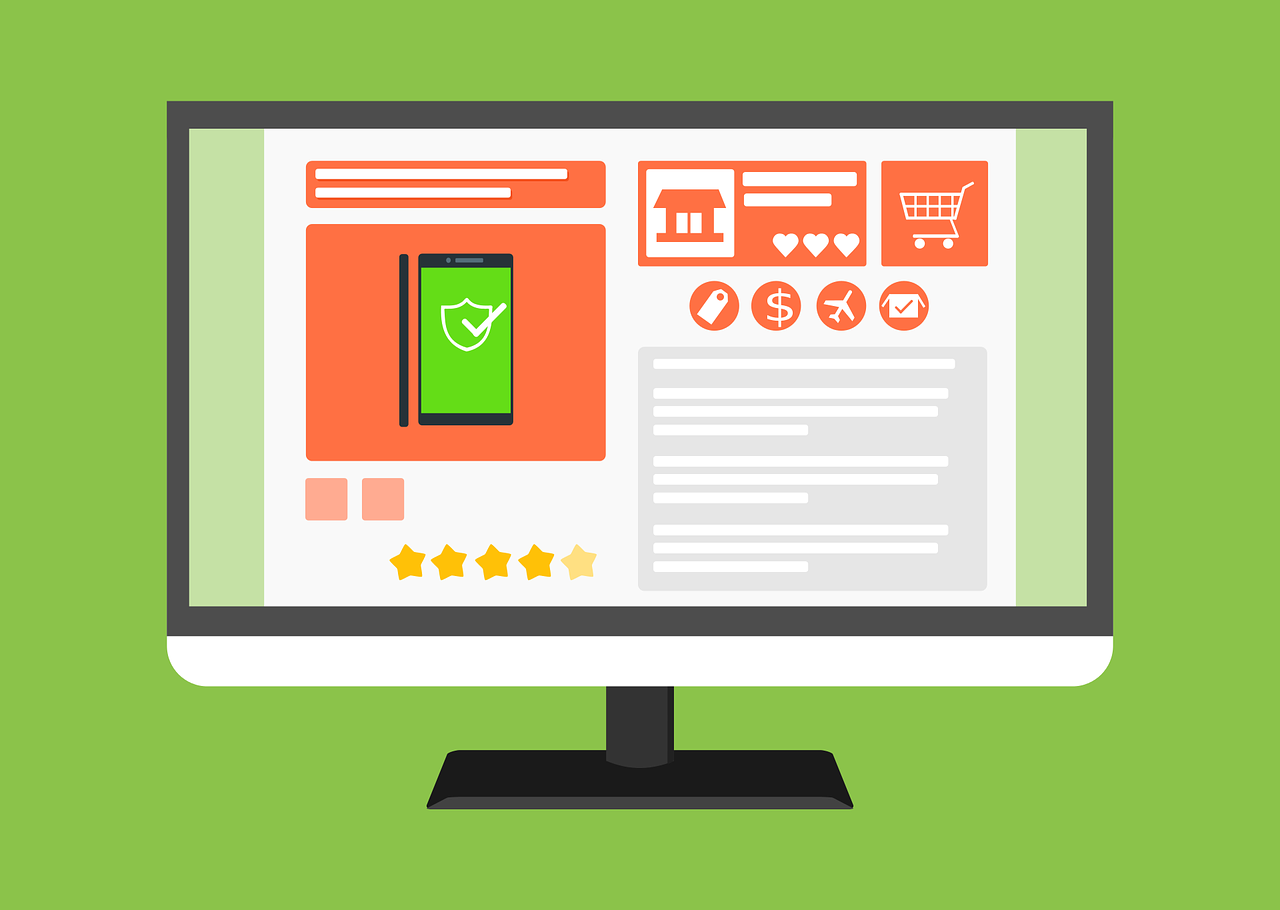
Shopify vs WooCommerce
When you compare features, you want to see what each platform gives you right away and what you can add later. Let’s look at the built-in tools and extra add-ons for both Shopify and WooCommerce.
Built-in Tools
Shopify comes with many built-in tools to help you run your store from the start. You get product management, marketing tools like email campaigns, sales analytics, SEO features, payment gateways, SSL security, and even subscription services. You do not have to look for extra plugins to begin. Shopify also takes care of hosting and domain management. This lets you focus on selling instead of setting up tech stuff.
WooCommerce is different. It gives you basic inventory and product management. But you need plugins for most marketing and SEO features. For example, if you want better SEO, you might use a plugin like Yoast SEO. Subscription services also need a paid plugin. You must set up your own hosting and domain. This gives you more freedom, but you need to know how to manage these things.
Here’s a quick table to help you compare:
Feature Category | Shopify | WooCommerce |
|---|---|---|
Hosting & Domain Management | Hosted platform with hosting included; domain can be managed via Shopify or externally | Requires self-hosting and separate domain management; offers greater flexibility but needs technical know-how |
Built-in Tools | Product management, marketing tools (email campaigns, sales analytics), SEO, payment gateways, SSL, compliance, subscription services | Basic inventory and product management; marketing and SEO rely on third-party plugins (e.g., Yoast SEO); subscription via paid plugin |
Checkout & Payment | Optimized checkout process with easy payment gateway integration | Flexible checkout and payment integration but requires manual setup |
Performance & Security | Optimized performance due to hosted nature; SSL and compliance managed by Shopify | Performance depends on hosting provider; SSL and security must be configured by user |
🛠️ Tip: Shopify’s built-in tools are great for beginners. WooCommerce lets you build your own setup, but you need to know what you are doing.
Extensions
Shopify has an app store with many apps to add new features. These apps help with marketing, shipping, accounting, and more. The app store is easy to use, but you may find some limits if you want to change everything. Shopify’s apps work well together, and you can install them with just a few clicks.
WooCommerce uses the WordPress plugin library. You can find almost any feature you want, from advanced SEO to custom checkout pages. There are thousands of plugins, both free and paid. This gives you almost endless options for customization. You can even hire a developer to build something special for your store. Just remember, more plugins mean more updates and more things to manage.
Here’s a quick look at how extensions compare:
Shopify apps are easy to install and manage, but you have fewer choices than WooCommerce.
WooCommerce plugins give you more freedom, but you need to keep them updated and make sure they work together.
Shopify’s hosted system means you get 99.99% uptime and fast load speeds. WooCommerce’s speed depends on your hosting.
If you want a store that just works, Shopify’s features and apps make things simple. If you want to build something unique, WooCommerce’s plugins let you do it your way.
When you compare Shopify vs WooCommerce, think about how much control you want and how much time you want to spend managing your store’s features.
Customization

When you want your store to stand out, customization matters. Let’s see how Shopify and WooCommerce help you make your shop unique.
Shopify Options
Themes
Shopify gives you a big library of themes. You can pick from free or paid designs. Each theme looks modern and works well on phones and computers. You can change colors, fonts, and layout using a drag-and-drop editor. You do not need to know any code. This makes Shopify great if you want to set up fast and still have a good-looking store.
Improving your site’s navigation with Shopify’s tools can boost your conversion rates by up to 18.5%. That means more visitors become buyers just by making your store easier to use!
Most Shopify users stick with the built-in theme editor. Only about 1% choose custom themes, since hiring a developer can cost a lot. If you want to go deeper, you can edit HTML, CSS, or even use Shopify’s Liquid code. This lets you add special features, but it takes more skill.
Here’s a quick look at Shopify’s customization methods:
Customization Method | Learning Curve | Flexibility | Best For |
|---|---|---|---|
Theme Editor (No-Code) | Low | Moderate | Quick changes, easy updates |
HTML/CSS (Code) | Medium | High | Advanced tweaks |
Shopify Liquid (Code) | High | Very High | Custom features, app building |
Apps
Shopify’s app store has thousands of apps. You can add reviews, pop-ups, or even connect to social media. Installing apps is simple—just a few clicks. You get lots of options, but you may find some limits if you want to change everything about your store. Shopify keeps things easy, but you trade some freedom for that simplicity.
Shopify offers many customization options, but its closed system means you can’t change every detail.
You pay a monthly fee for this ease of use and support.
WooCommerce Flexibility

Design
WooCommerce runs on WordPress, so you get full control over your store’s look. You can use any WordPress theme or build your own. Want to change the product page, checkout, or add special buttons? You can do it. WooCommerce lets you add custom product pages, advanced filters, and unique checkout steps. You can even let customers upload images or pick delivery dates.
Here are some cool things you can do with WooCommerce:
Offer different sizes or colors for products.
Add gift wrapping or custom text fields.
Let shoppers build their own kits.
Sell bundles or grouped items.
Offer subscriptions or let customers name their price.
Control
WooCommerce gives you deep control because it is open-source. You can add plugins for almost anything. Want to let customers upload photos for custom shirts? There’s a plugin for that. Need a special checkout process? You can build it or hire a developer. You do not pay monthly fees, but you need to handle updates and security.
Platform | User Skill Requirement | Notes | |
|---|---|---|---|
Shopify | Wide range of themes and apps; easy to use but less flexible | Low | Drag-and-drop builder; all-in-one solution; monthly fees |
WooCommerce | Deep customization; full control over design and features | Medium to High | Open-source; advanced options; no monthly fees, but you manage hosting and updates |
Many users love WooCommerce for its flexibility. You can change every part of the shopping experience. This helps you stand out and build a brand that feels truly yours.
If you want a store that looks and works exactly how you imagine, WooCommerce gives you the tools to make it happen.
In the Shopify vs WooCommerce debate, your choice comes down to how much control you want and how much work you are ready to do.
Payment

Shopify Methods
Shopify makes payments simple for you. You can use Shopify Payments, which is built right into your dashboard. This means you do not need to set up a third-party gateway if you do not want to. Shopify Payments supports all major credit cards, Apple Pay, Google Pay, and even some local payment methods. If you want, you can also connect PayPal, Amazon Pay, or over 100 other gateways.
You get a fast and secure checkout. Shopify handles PCI compliance and fraud protection, so you do not have to worry about safety. The platform also lets you accept payments in different currencies, which helps if you sell worldwide.
Shopify tracks how well your payments work using several important metrics. Here’s a quick look:
Metric | What It Means |
|---|---|
Shows how many payments get approved by banks. | |
Capture Rate | Tells you how many approved payments actually go into your account. |
Purchase Success Rate | Measures how many payments finish without problems. |
Payment Failure Rate | Counts payments that do not go through, often because of errors or issues. |
Fraud Rate | Tracks payments that turn out to be fake or risky. |
Acceptance Rate | Combines approval and completion rates for a full picture. |
Chargeback Rate | Shows how often customers dispute charges and ask for refunds. |
Uptime | Measures how often the payment system works without stopping. |
Processing Speed | Tells you how fast payments get processed, which matters when your store is busy. |
Shopify gives you detailed reports, fraud analysis, and 24/7 support. You can spot problems fast and keep your checkout running smoothly.
If you want a payment system that just works, Shopify makes it easy. You do not need to worry about technical details. You can focus on selling and let Shopify handle the rest.
WooCommerce Methods
WooCommerce gives you lots of choices for payments. You can use PayPal, Stripe, Square, Authorize.Net, and many more. You pick the gateways you want and add them as plugins. WooCommerce Payments, a newer option, lets you manage everything from your WordPress dashboard. This makes things easier and helps you track your money in one place.
You can also accept bank transfers, checks, or even cash on delivery. If you want to offer local payment methods, WooCommerce supports those too. You control how your customers pay.
WooCommerce helps you track payment performance with helpful tools:
Order Count: See how many orders you get. This shows if your payment system works well.
Refunds: Track how often you give money back. High refunds might mean payment problems.
Total Sales: Check your total sales to see if your payment methods help you grow.
Advanced Reporting: Use built-in reports to watch sales trends and spot issues.
Analytics Dashboard: Get real-time updates on sales and customer actions.
You can also look at:
Retention Rate: Find out how many customers come back to buy again.
Cart Abandonment Rate: See how many people leave before paying. This helps you fix checkout problems.
Customer Satisfaction: Read reviews and ratings to learn if people trust your payment process.
Conversion Rate: Measure how many visitors actually buy something.
Sales Volume: Track how much you sell over time.
Average Order Value (AOV): See how much people spend each time they order.
WooCommerce Payments makes checkout smoother and helps you manage payments without leaving your store. This can boost your sales and make your life easier.
If you want full control and lots of payment options, WooCommerce gives you the tools. You can build a payment system that fits your business, but you may need to set up and manage more plugins.
Scalability

Shopify Growth
Shopify makes it easy to grow your store. You do not have to worry about servers or upgrades. Shopify takes care of all the tech stuff for you. The platform has over 4.6 million stores and handles about 199 million orders each month. That is a lot! Each store can get up to 4,000 orders every minute. You can have up to 200 inventory spots. If you sell many products, you can start with 50,000 items and add 1,000 more every day.
Shopify is made to grow with your business. You pay the same amount each month, so costs are easy to track. Your store keeps working well, even when it gets busy. Shopify has a 99.98% uptime, so your store almost never goes offline. During big sales, Shopify can handle 125,000 visitors every minute and process 400,000 orders in one day. You do not need to upgrade hosting or worry about too many shoppers.
Shopify helps you sell to people all over the world. You can run more than one store, use different money types, and offer many languages. Big brands like Ruggable and Knix use Shopify for lots of sales. Shopify keeps getting better, with over 800 new features since 2020. This means your store gets new tools as you grow.
Here’s a quick table showing how Shopify helps you grow:
Feature | Shopify |
|---|---|
Traffic Handling | Automatic scaling |
Product Limits | 50,000+ (1,000 new/day) |
Uptime | 99.98% |
Analytics | Built-in, advanced |
Technical Expertise | Minimal |
Global Reach | 175+ countries |
Shopify’s ready-made system lets you focus on selling, not tech problems.
WooCommerce Growth
WooCommerce gives you lots of ways to grow, but you must do more work. The platform runs over 6.5 million websites and has about 20% of the world’s online stores. You can add as many products as you want. There are no set limits, but your store’s speed depends on your hosting and setup.
Big stores like Root Science and Mint Mobile use WooCommerce. You can make your store bigger by getting better hosting, making your site faster, and adding plugins. WooCommerce lets you use cool features like AI helpers, chatbots, and even shopping with augmented reality. You can use plugins to track your growth and make your store better.
WooCommerce is getting more users from other platforms. In the last 90 days, over 22,000 stores switched to WooCommerce from Shopify, Wix, Squarespace, and others. This shows many businesses trust WooCommerce as they grow.
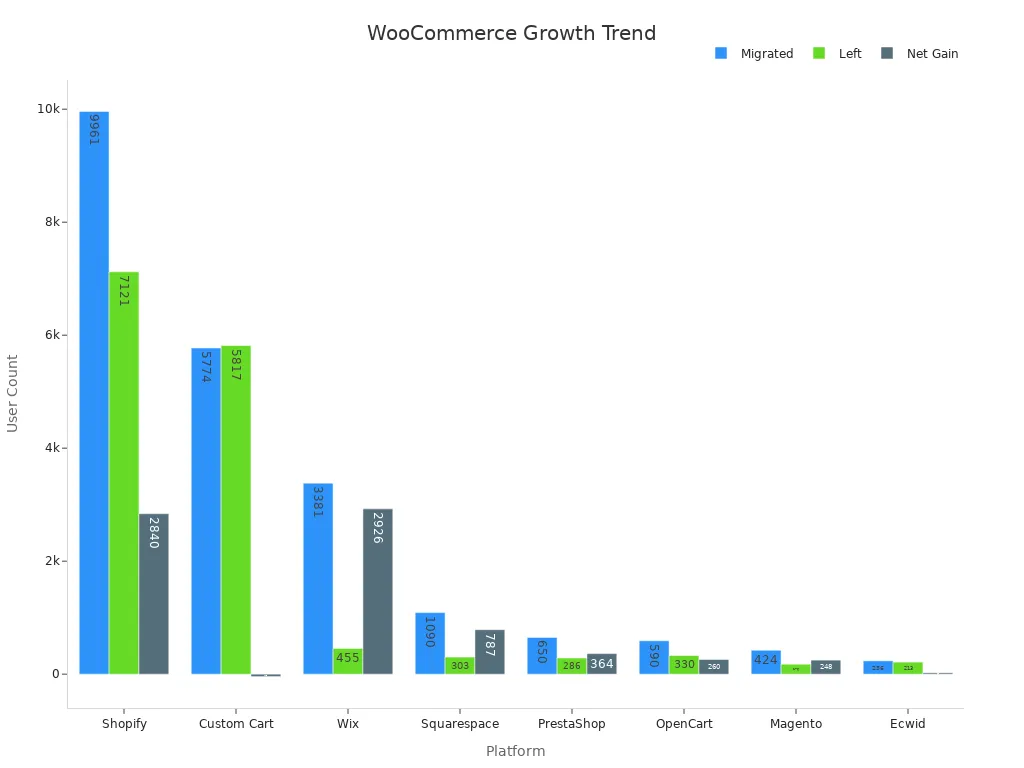
Here’s a table to compare how Shopify and WooCommerce help you grow:
Feature | Shopify | WooCommerce |
|---|---|---|
Traffic Handling | Automatic | Manual |
Product Limits | High (expandable) | Unlimited (hosting) |
Cost Structure | Fixed plans | Pay-as-you-grow |
Technical Skill | Low | Medium to High |
WooCommerce lets you build your store your way, but you need to watch your hosting and speed as you grow.
Support
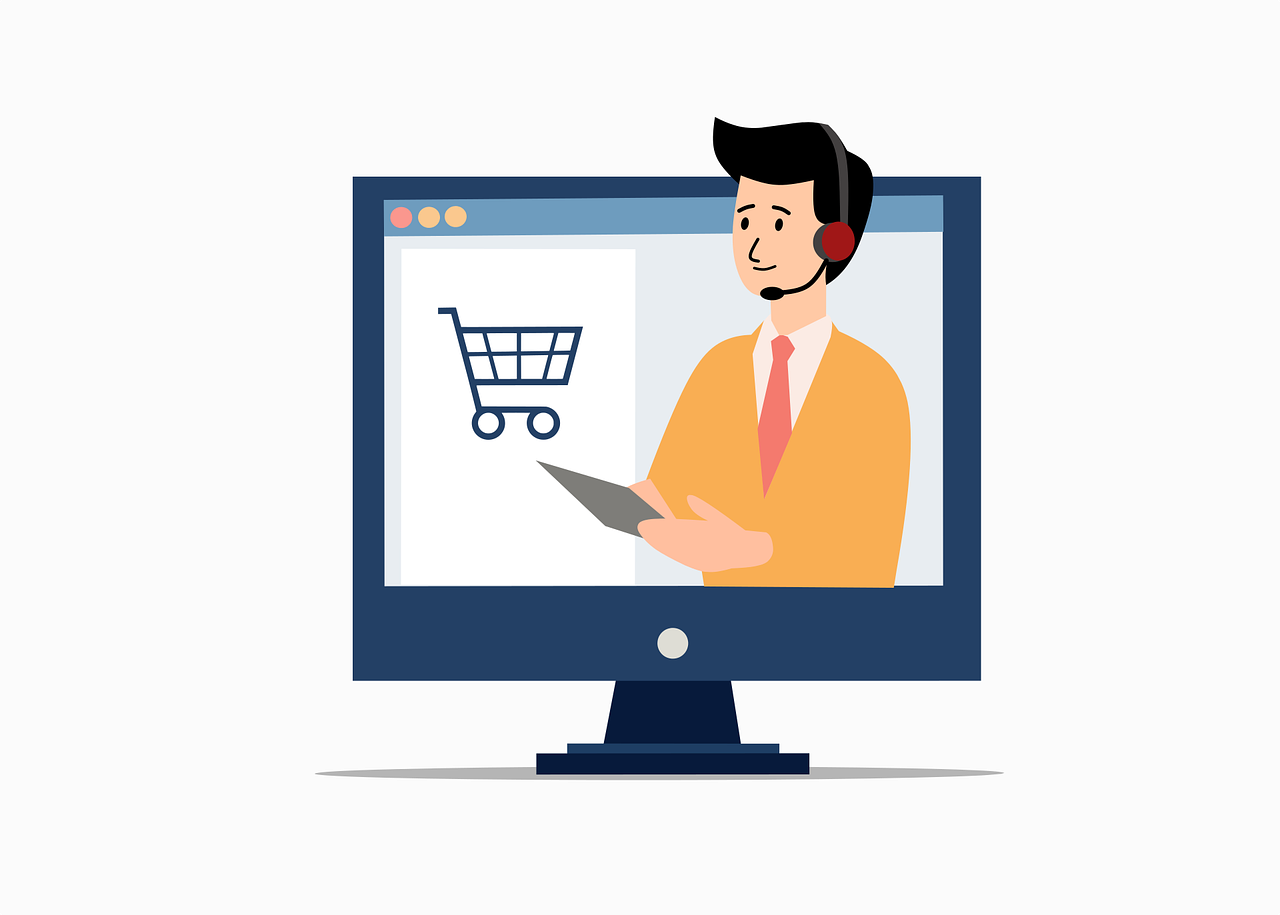
Shopify Help
If you have a problem, you want help fast. Shopify gives you support all day and night. You can use live chat, email, or phone. The team answers quickly, so you do not wait long. Many people get help in just a few minutes.
Shopify checks how well their support works with some important numbers:
Metric Name | Description |
|---|---|
How fast Shopify answers your first message. Live chat is often just a few minutes. | |
Average Reply Time | How long it takes to get each answer during a chat. |
Average Resolution Time | Time from your first message until your problem is fixed. |
First Call Resolution | How often Shopify fixes your problem in the first chat or call. |
Customer Satisfaction | How happy you are after getting help. |
Net Promoter Score | How likely you are to tell others about Shopify’s support. |
Shopify’s team usually answers very fast, especially on live chat. Most store owners get their problems fixed the first time. This means you spend less time waiting and more time selling.
Shopify uses special tools like Gorgias to make support even faster. These tools help lower wait times by over 70%. More problems get fixed on the first try, about 50% better than before. Most people say they are happy with support, with over 90% giving good reviews. You can trust that help is always there when you need it.
If you like to find answers yourself, Shopify has a big help center. There are guides and forums too. You can search for step-by-step articles or ask other store owners for tips.
WooCommerce Help
WooCommerce support works in a different way. WooCommerce is open-source, so there is no live chat or phone help from one company. You use community forums, guides, and email tickets. If you buy a paid extension, you often get help from the developer.
You might wait longer for answers than with Shopify. How fast you get help depends on where you ask. In forums, other users or moderators may reply in a few hours or days. For email tickets, you usually get a reply within one business day. If you use a popular plugin, you might get help faster.
Here’s a table to compare support speed:
Metric Name | Shopify Support | WooCommerce Support |
|---|---|---|
First Response Time (FRT) | Minutes (live chat/phone) | Hours to days (forum/email) |
Average Reply Time | Fast, often under 30 minutes | Varies, can be several hours |
Average Resolution Time | Usually same day | Depends on issue and plugin developer |
First Call Resolution | High, many issues fixed right away | Lower, may need follow-up |
Customer Satisfaction | 90%+ | Varies by plugin and community |
Net Promoter Score | High, users recommend support | Mixed, depends on experience |
If you like solving problems and learning from others, WooCommerce’s community is helpful. You get lots of guides and advice from people who have used it before.
You can also pay a developer or agency for extra help. This gives you expert support, but it can cost more. WooCommerce gives you freedom, but you need to handle your own support.
Tip: If you want fast and direct help, Shopify is best. If you like to learn and fix things yourself, WooCommerce’s community and guides are great.
Security

Shopify Security
When you have an online store, you want shoppers to feel safe. Shopify makes security easy for you. You do not need to set up most safety tools. Shopify does this work in the background.
Here is what Shopify gives you for security:
Shopify has Level 1 PCI DSS approval. This is the top level for payment card safety. You can take credit cards without worry.
Every Shopify store gets a free 256-bit SSL certificate. This keeps all data between your store and customers private.
Shopify watches for cyber threats all the time. This helps stop attacks like DDoS before they cause trouble.
You can use two-factor authentication (2FA) on your account. This adds extra safety when you log in.
Shopify uses Web Application Firewalls (WAF) to block bad traffic and attacks.
The platform uses a Content Security Policy (CSP) and checks for new risks often. These steps help keep your store safe from new dangers.
Shopify only works with PCI DSS safe payment gateways. Your payments stay protected from start to finish.
Shopify also shares tips to help you stay safe. You should use strong passwords, check app permissions, and make backups. If you sell to people in the EU, follow privacy rules like GDPR.
🛡️ Tip: Shopify’s security lets you focus on selling. You do not need to be a tech expert to keep your store safe.
WooCommerce Security
WooCommerce gives you more control, but you must handle security yourself. Your store’s safety depends on your choices and setup.
Here are some important things for WooCommerce security:
WooCommerce says you should always use an SSL certificate and HTTPS. This keeps your customers’ data private.
PCI safety depends on your payment gateway. If you use PayPal or Stripe, you must make sure it follows PCI rules.
If you have shoppers from the EU, you must follow GDPR rules. This protects your customers’ privacy.
WooCommerce security depends on your WordPress setup. You must keep WordPress, WooCommerce, and plugins updated. Old software can let hackers in.
Only use plugins from trusted places. Bad plugins can make your store unsafe.
WooCommerce has guides to help you protect your hosting and make your site stronger. You can find tips to manage risks and keep your store safe.
You can make your WooCommerce store very safe. You just need to stay alert and follow good safety steps.
Security Feature | Shopify (Managed) | WooCommerce (DIY) |
|---|---|---|
SSL Certificate | Included, automatic | You must install and renew |
PCI Compliance | Built-in, always compliant | Depends on payment gateway |
Security Monitoring | Real-time, automatic | You must set up or use plugins |
Updates & Patches | Handled by Shopify | You must update everything |
Data Privacy (GDPR) | Tools and guides provided | You must configure and monitor |
🔒 Note: If you want an easy way, Shopify handles security for you. If you want to control everything, WooCommerce lets you make your own safety plan.
SEO
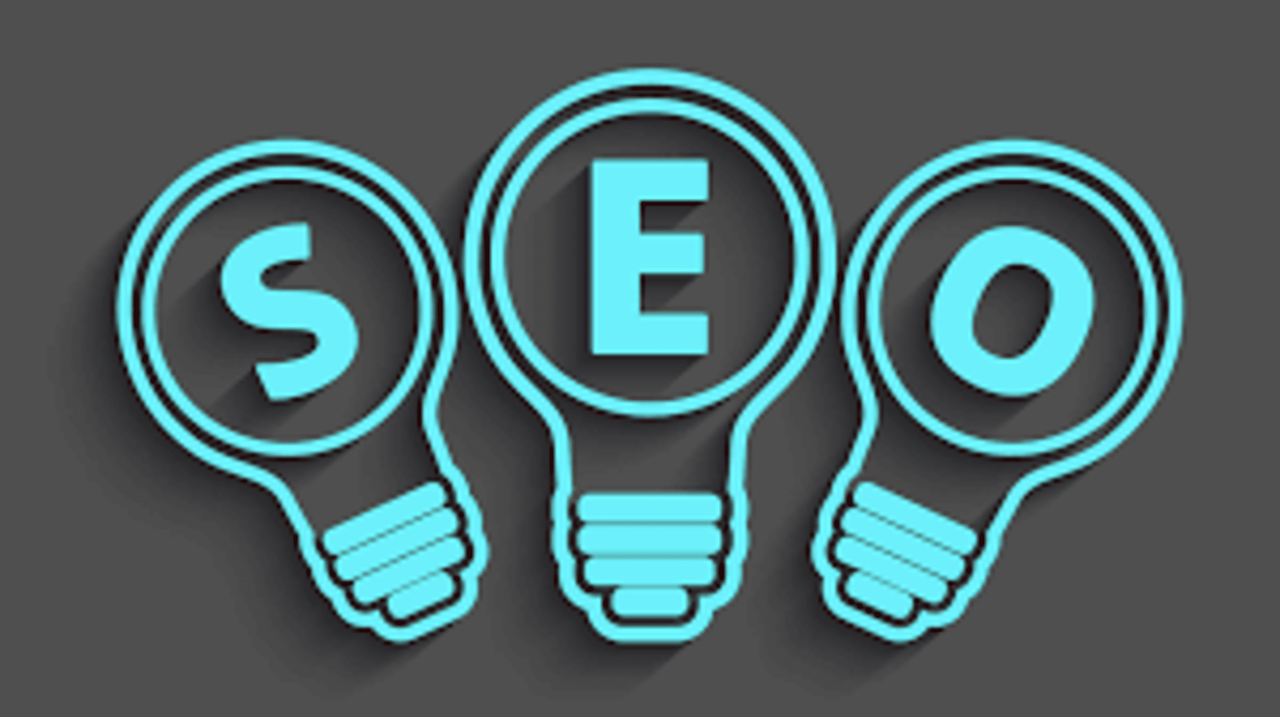
Shopify SEO
You want your store to show up on Google, right? Shopify gives you a good start with built-in SEO features. You get automatic sitemaps, clean URLs, and mobile-friendly themes. Shopify also lets you edit title tags, meta descriptions, and image alt text for every product and page. These tools help search engines find your store.
Shopify handles a lot of the technical stuff for you. You do not need to worry about hosting speed or SSL certificates. Shopify takes care of those. Your store loads fast, which helps your ranking. You also get a free SSL certificate, so your site looks safe to shoppers and search engines.
Here are some things you can do with Shopify SEO:
Edit page titles and meta descriptions for products and collections.
Add alt text to images for better image search results.
Create custom URLs for your pages.
Use built-in blogging tools to add fresh content.
Tip: Use Shopify’s blog feature to write about your products or share tips. Google loves fresh content, and blogging can help you rank higher.
Shopify has some limits. You cannot change every part of your site’s code. Some advanced SEO tweaks need apps from the Shopify App Store. Many of these apps cost extra. You also cannot control your server settings, so you rely on Shopify’s setup.
Here’s a quick table to show what you get:
Shopify SEO Feature | Available? |
|---|---|
Edit Meta Tags | ✅ Yes |
Custom URLs | ✅ Yes |
Image Alt Text | ✅ Yes |
Automatic Sitemap | ✅ Yes |
Server Access | ❌ No |
SEO Apps | ✅ Yes (paid) |
WooCommerce SEO
WooCommerce gives you more control over SEO. You run your store on WordPress, which is famous for being SEO-friendly. You can use plugins like Yoast SEO or Rank Math. These plugins help you set up meta tags, sitemaps, breadcrumbs, and more. You can edit almost every part of your site.
You can change your URLs, add rich snippets, and even control your robots.txt file. WooCommerce lets you pick your hosting, so you can choose a fast server. Fast sites rank better. You can also use caching plugins to speed up your store.
Here’s what you can do with WooCommerce SEO:
Install SEO plugins for advanced features.
Edit every meta tag and URL.
Add schema markup for rich search results.
Use any theme or builder for custom layouts.
Control your site’s speed and security.
Note: WooCommerce gives you more freedom, but you need to set up and manage your SEO tools. You must update plugins and watch for conflicts.
Let’s compare WooCommerce SEO features:
WooCommerce SEO Feature | Available? |
|---|---|
Edit Meta Tags | ✅ Yes |
Custom URLs | ✅ Yes |
Image Alt Text | ✅ Yes |
Automatic Sitemap | ✅ Yes (plugin) |
Server Access | ✅ Yes |
SEO Plugins | ✅ Yes (free/paid) |
If you want easy SEO, Shopify works well. If you want full control and lots of options, WooCommerce is your best bet. Both can help you rank high, but WooCommerce lets you dig deeper.
Real-World Use

Shopify Examples
You may wonder how real businesses use Shopify to grow. Let’s look at some stories. Imagine you have a small clothing shop. You want to sell online, but you do not know much about websites. Shopify helps you start quickly. You choose a theme, add products, and open your store in one day. You do not worry about hosting or security. Shopify takes care of everything.
Think about a local bakery. They wanted more customers. With Shopify, they made an online store and took orders for pickup and delivery. Their sales went up by 40% in three months. They used Shopify’s tools to send emails and track orders. The owner said, “I never thought selling online could be this easy.”
Shopify is good for businesses that want things simple and fast. Most Shopify stores work very well. In fact, 93% of Shopify stores get top performance ratings. Pages load fast—about 2.4 times quicker than most WooCommerce stores. This means your customers do not wait. Fast stores help you get more sales.
Here is a table that shows how Shopify helps different businesses:
Business Type | Shopify Benefit |
|---|---|
Small Retail Shop | Quick setup, no tech skills needed |
Local Service | Easy online booking and payments |
Growing Brand | Scales fast, handles big sales events |
If you want a store that just works, Shopify lets you focus on your products and customers, not on tech problems.
WooCommerce Examples
Now, let’s see how WooCommerce helps other businesses. Imagine you have a gadget shop with special products. You want to offer custom bundles and checkout choices. WooCommerce gives you full control. You can change every part of your store. You own all your data and code. This is great if you have a tech team or like to tinker.
Think about a coffee company. They wanted customers to build their own coffee subscription boxes. With WooCommerce, they added plugins and changed the checkout steps. Their average order value went up by 25%. The owner said, “We needed something unique. WooCommerce gave us the freedom to build it.”
WooCommerce is best for businesses that want lots of customization. About 34% of WooCommerce stores get high performance, but you can improve this with good hosting and smart plugins. You also save money if you manage your own site. Monthly costs can be as low as $4, depending on what you choose.
Here is a table that shows how WooCommerce fits different business needs:
Business Type | WooCommerce Benefit |
|---|---|
Niche Online Store | Full control, custom features |
Tech-Savvy Business | Complete data and code ownership |
Large Catalog Store | Unlimited products, flexible design |
WooCommerce lets you build your dream store. If you want to stand out and control every detail, this platform gives you the tools.
Choosing Your Platform

Small Business
If you run a small business, you probably want something simple and quick. You may not have a big team or lots of tech skills. Shopify is a great choice for you. You can set up your store fast and start selling right away. Shopify handles hosting, security, and updates. You do not need to worry about the technical side.
WooCommerce can work for small businesses too, especially if you already use WordPress. You get more control and can save money by picking your own hosting and plugins. But you will need to spend more time learning how things work.
Many small businesses use the direct-to-consumer (D2C) model. This means you sell straight to your customers, just like brands such as Casper or Warby Parker. Shopify makes this easy. If you want to test new products or try dropshipping, Shopify also supports that with built-in tools.
Here are some business models that fit small businesses:
Direct-to-consumer (D2C): Sell straight to your customers.
Dropshipping: Sell products without holding inventory.
Franchise: Use a proven brand to start your store.
You can also use market research tools like Owler and ZoomInfo. These help you watch your competitors and spot trends. The SBA offers local help and online guides to make smart choices for your business.
Tip: If you want to focus on your products and customers, Shopify keeps things simple. If you love to tinker and want to save money, WooCommerce gives you more freedom.
Large Business
Large businesses need a platform that can handle lots of products, traffic, and sales. You want strong analytics, advanced features, and the ability to scale up fast. Shopify Plus is built for big brands. It offers extra support, automation, and tools for high-volume stores. You get 24/7 help and can run multiple stores from one dashboard.
WooCommerce is also a good fit for large businesses, especially if you want full control. You can build custom features, connect to big data tools, and use advanced plugins. You will need a skilled team to manage hosting, security, and updates.
Here’s a table to help you compare:
Platform | Best For | Key Features |
|---|---|---|
Shopify Plus | High-volume, global brands | Automation, multi-store, 24/7 support |
WooCommerce | Custom, complex businesses | Full control, custom plugins, open-source |
Large businesses often use the marketplace model, like Amazon or eBay. You can connect buyers and sellers or run your own private label products. Data tools like S&P Global and FactSet help you track trends and make smart decisions.
Shopify Plus gives you a ready-made system for growth. WooCommerce lets you build anything, but you need a tech team.
Niche Store
Do you have a unique product or serve a special group of customers? A niche store lets you stand out. WooCommerce is perfect for this. You can customize every part of your store. You can add special features, use any theme, and control your data. If you want to sell private label products or use third-party manufacturing, WooCommerce gives you the tools.
Shopify can also work for niche stores, especially if you want to launch fast. You can use apps to add features, but you may hit limits if you want something very unique.
Niche stores often use these business models:
Private label: Sell products with your own brand.
Razor and blade: Offer a main product with add-ons.
Audience targeting: Use data from Eyeota or Defined.ai to reach your perfect customer.
You can use data marketplaces like Eagle Alpha or Innodata to find the right audience. The SBA also offers guides to help you understand your market and pick the best platform.
If you want a store that feels one-of-a-kind, WooCommerce gives you the freedom to build it your way. Shopify is best if you want to get started quickly and keep things simple.
Global Store

Do you want to sell your products everywhere? Running a global store is exciting, but it is not always easy. You have to think about money, languages, taxes, and shipping rules. Let’s see how Shopify and WooCommerce help you sell worldwide.
Shopify for Global Stores
Shopify makes selling in other countries simple. You can show prices in many currencies. Shopify Payments works with over 130 currencies. This means shoppers can pay in their own money. You can use Shopify Markets to manage sales in different places. Everything is in one dashboard.
You can translate your store into many languages. Use built-in tools or add apps for more choices. Shoppers can read product pages and checkout in their own language. Shopify also figures out taxes and duties for you. It picks the right tax for each country. You do not need to learn every rule.
Shipping can be hard when you sell everywhere. Shopify works with big shipping companies like DHL, UPS, and FedEx. You can show shipping rates at checkout. You can print shipping labels from your dashboard.
🌍 Tip: Shopify has global tools that save you time. You can focus on selling, not learning every country’s rules.
WooCommerce for Global Stores
WooCommerce gives you more control, but you must set up more things. You can use plugins to add multi-currency support. Plugins like WooCommerce Multi-Currency let you show prices in different money types. You can use translation plugins like WPML or Polylang. These help you make your store in many languages.
You must set up taxes and duties for each country. WooCommerce has plugins for this, but you need to check the rules yourself. Shipping is flexible. You can use plugins to connect with carriers or set your own rates. You can even offer local pickup or special delivery.
WooCommerce is good if you want to change every part of your global store. You can build a special checkout for each country. You can also use local payment gateways that your customers know.
Feature | Shopify | WooCommerce |
|---|---|---|
Multi-Currency | Built-in, easy to set up | Plugin needed, more control |
Multi-Language | Built-in/apps | Plugin needed, full flexibility |
Taxes & Duties | Automatic calculation | Plugin/manual setup |
Shipping Integration | Built-in with major carriers | Plugin needed, custom options |
Local Payment Methods | 100+ gateways | Any gateway via plugin |
If you want an easy way to sell worldwide, Shopify is a good choice. If you want to build a custom global store and do not mind extra work, WooCommerce gives you the tools.
Selling to the world brings you many new customers. Pick the platform that matches your skills and goals. You can reach people everywhere—just choose the right path for you!
Picking between Shopify and WooCommerce depends on what you want and what you know. Shopify is good if you want to start fast and need help. It is best for small groups or people new to online stores. WooCommerce lets you change more things and make your store special. It is better if you know about tech or want to build something unique. Think about how you want your store to grow. Watch important numbers like sales, profit, and how many customers come back. These numbers show if your store is doing well.
Domain | Why It Matters | |
|---|---|---|
Finance | Gross Margin, Net Profit, Revenue | Shows business health and growth |
Sales | Lead to Win Rate, MRR Growth Rate | Tracks sales success and efficiency |
SaaS | Customer LTV, Churn Rate, Retention | Measures loyalty and recurring value |
Marketing | Account Reach, Followers | Builds brand and audience |
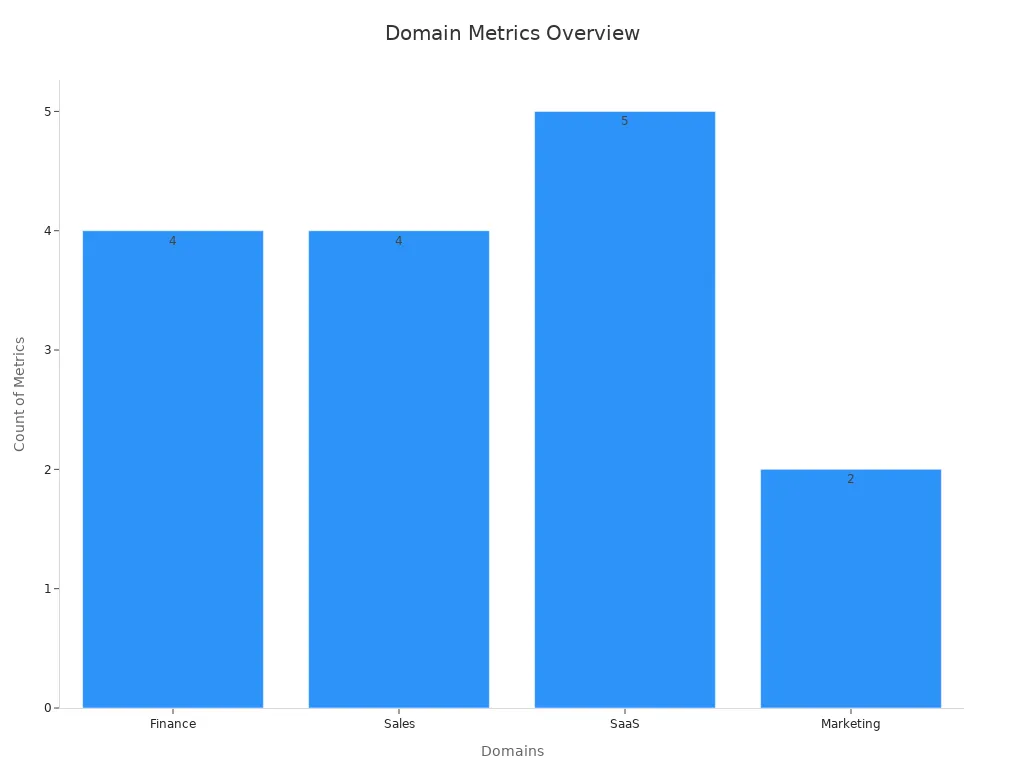
Try a free trial or demo before you choose. Pick the platform that fits your skills and your future plans.
FAQ

What is the main difference between Shopify and WooCommerce?
Shopify gives you an all-in-one package. You get hosting, security, and support. WooCommerce lets you build your store on WordPress. You control everything, but you set up hosting and updates yourself.
Can I switch from Shopify to WooCommerce or the other way around?
Yes, you can move your store. You may need special tools or help to move products, customers, and orders. Some apps and plugins make this process easier.
Which platform is better for beginners?
Shopify is easier for beginners. You do not need tech skills. You follow simple steps and get support any time. WooCommerce works best if you know WordPress or want to learn more about websites.
Do I need to know how to code to use these platforms?
You do not need to code for Shopify. You use drag-and-drop tools. WooCommerce does not require code, but knowing some basics helps if you want to customize your store.
Which platform is cheaper in the long run?
WooCommerce can cost less if you manage your own hosting and pick free plugins. Shopify has a fixed monthly fee, but you pay for apps and transaction fees. Your costs depend on your choices.
Can I use my own domain name?
Yes, both platforms let you use your own domain name. Shopify lets you buy one or connect an existing domain. WooCommerce works with any domain you own.
Which platform is better for selling worldwide?
Shopify makes global selling easy with built-in tools for currency, language, and taxes. WooCommerce lets you add plugins for these features. You get more control, but setup takes more time.
What kind of support will I get?
Shopify gives you 24/7 live chat, email, and phone support. WooCommerce uses forums, guides, and email tickets. If you buy plugins, you may get extra help from the developer.


TangBuy: A Smarter Way to Dropship in 2025
If you're looking to stay competitive with dropshipping in 2025, speed and trend-awareness are key. TangBuy helps you stay ahead with real-time product trends, fast fulfilment, and factory-direct sourcing. With over 1 million ready-to-ship items, 24-hour order processing, and seamless Shopify integration, TangBuy makes it easier to test, scale, and succeed in today's fast-moving eCommerce landscape.
See Also
Choosing Between Amazon And eBay For Online Sellers 2025
Deciding Between Amazon And eBay For Your Business 2025
Selecting Dropshippers Or Wholesalers For Your Business Success
